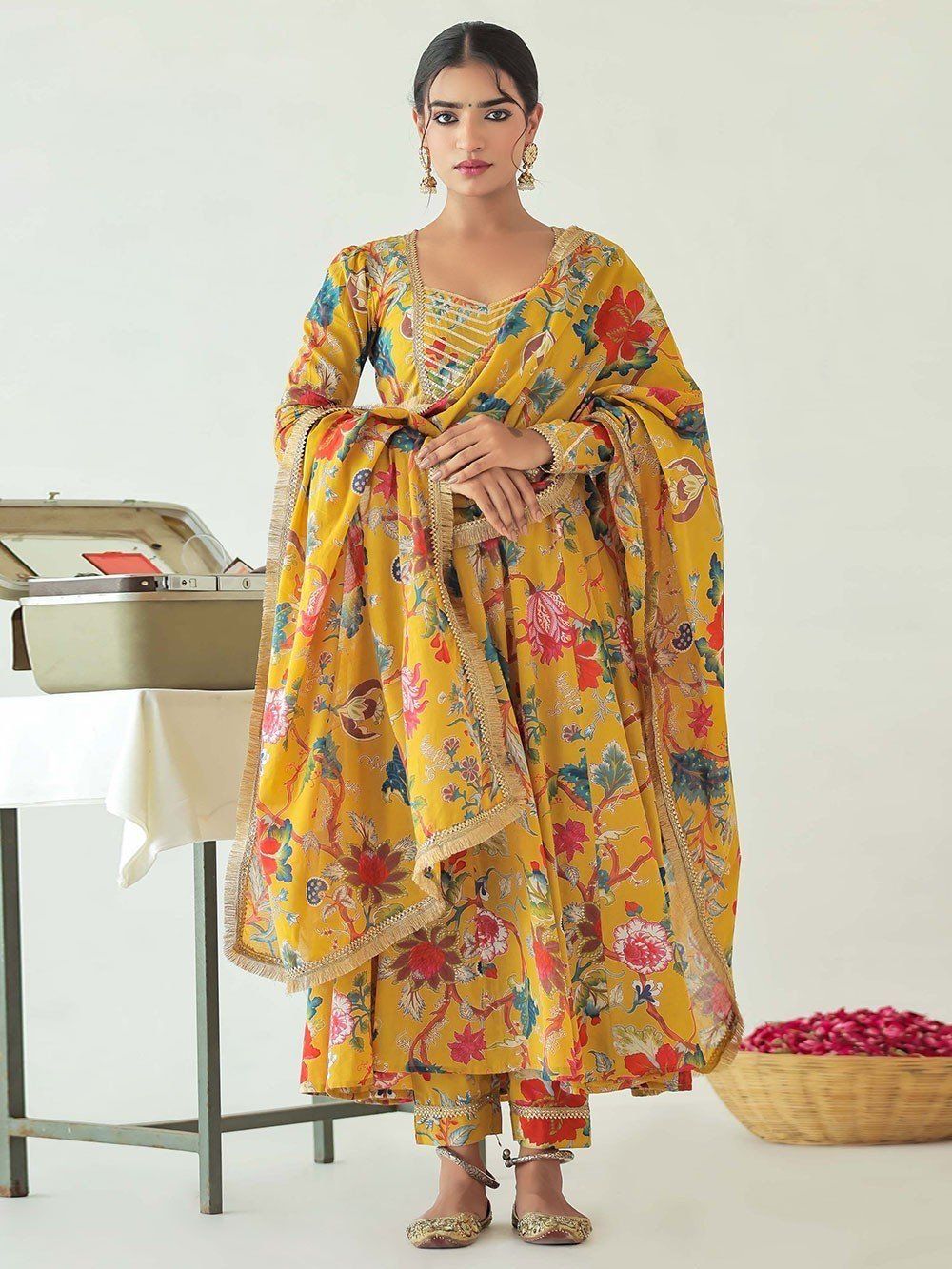Raksha Bandhan, a festival that celebrates the bond between siblings, holds a special place in the hearts of Indians. The essence of this occasion is not only in the exchange of love and promises of protection but also in the vibrant traditional attire that adorns people during the festivities. The Loom is going to delve into the rich tapestry of traditional dresses worn on Raksha Bandhan, reflecting the diversity, culture, and heritage of India.
The Significance of Raksha Bandhan

Raksha Bandhan, commonly known as Rakhi, is a Hindu festival that honors the sacred relationship between brothers and sisters. The central ritual involves the sister tying a decorative thread (rakhi) around her brother’s wrist, symbolizing her love and seeking his protection in return. The brother, in turn, presents his sister with gifts and promises to safeguard her. This festival transcends religion and showcases the universal essence of sibling love.
Diverse Cultures, Diverse Attires

India is a land of myriad cultures, languages, and traditions, each with its distinct traditional attire. On Raksha Bandhan, people across the country adorn themselves in their regional finery, reflecting their roots and heritage. Let’s explore some of the traditional dresses worn during this festive occasion.
Sari and Lehenga-Choli:

In North India, the sari and lehenga-choli take center stage. The sari, an elegant drape, is draped differently across states. From the Banarasi silk saris of Uttar Pradesh to the Bandhani saris of Rajasthan, each style embodies the region’s unique craftsmanship. The lehenga-choli, a two-piece ensemble consisting of a flared skirt and blouse, is often intricately embroidered and embellished, adding a touch of grandeur to the celebrations.
Salwar Kameez:

The salwar kameez, a versatile three-piece outfit comprising a long tunic (kameez), loose-fitting pants (salwar), and a matching scarf (dupatta), is favored in regions like Punjab and Haryana. The attire offers comfort without compromising on festive elegance. Vibrant colors, intricate embroidery, and mirror work are common features that adorn these dresses.
Kanjeevaram Sarees and Pattu Pavadas:

Down South, particularly in states like Tamil Nadu and Andhra Pradesh, the Kanjeevaram silk saree takes the spotlight. Known for their rich texture and intricate designs, these sarees are often passed down through generations. For young girls, the pattu pavada, a traditional skirt and blouse ensemble, is a popular choice. The attire reflects the opulence and refinement of South Indian culture.
Bengali Sarees and Panjabis:

In West Bengal, the red and white Bengali saree, also known as the Shari, is a cultural icon. The saree’s distinctive red border and white base symbolize purity and strength. For men, the Punjabi, a knee-length kurta worn with dhoti or pajama, is a traditional attire that exudes elegance and simplicity.
Kasavu Sarees and Mundu:

Kerala’s traditional attire includes the kasavu saree and mundu. The kasavu saree, characterized by its off-white base and gold border, showcases the state’s appreciation for simplicity and tradition. The mundu, a white garment worn by men, reflects the region’s humble and unassuming culture.
Ornaments and Accessories

No traditional attire is complete without the right ornaments and accessories. On Raksha Bandhan, people often adorn themselves with jewelry that complements their outfits. From intricately designed earrings and necklaces to bangles and anklets, these accessories add a touch of glamour and sophistication.
Colors of Celebration

Colors play a significant role in Indian festivals, and Raksha Bandhan is no exception. Each color holds a symbolic meaning. Red, signifying love and strength, is commonly worn during the festivities. Yellow represents auspiciousness, while white symbolizes purity and peace. People choose their attire’s colors based on personal preferences and cultural significance.
Raksha Bandhan is a celebration of love, trust, and protection. The diverse traditional dresses worn on this occasion reflect the cultural richness and unity that define India. Whether it’s the resplendent sarees, the elegant lehenga-cholis, the comfortable salwar kameez, or any other traditional attire, each outfit weaves a story of heritage, family bonds, and the vibrant tapestry of India’s traditions. As we celebrate Raksha Bandhan, let us appreciate the beauty of these attires that echo the essence of this cherished festival.
